Urban landscapes are becoming recognised as important places of biodiversity. The concrete jungle can potentially be a great habitat for wildlife and having good biodiversity in our cities allows urban-dwellers to interact with nature in their daily lives.
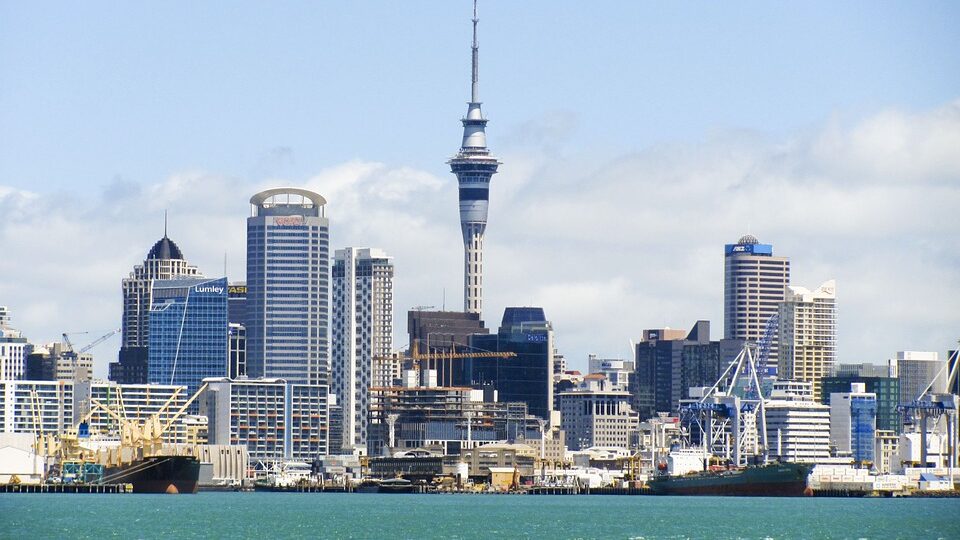
So how does New Zealand’s largest city stack up in the biodiversity stakes? Todd Landers, Samuel Hill, Miriam Ludbrook, Sarah Wells and Craig Bishop from Auckland Council and Massey University checked out biodiversity in the reserves on some of Auckland’s many volcanoes and report their findings in a recent issue of the New Zealand Journal of Zoology.
“Auckland, a city with a population of approximately 1.7 million, is located directly on the Auckland Volcanic Field, a late Quaternary era monogenetic field. There are at least 53 volcanoes across the field, many of which are of geological, cultural and ecological significance, such as for being reserves for native species. The highest and youngest volcano within the field is Rangitoto (260 m above sea level) and the highest volcano within Auckland city is Maungawhau (Mount Eden, 196 m). These volcanoes are distinctive landmarks of the city, and many are recreational reserves managed by Auckland Council that harbour a variety of important native wildlife.”
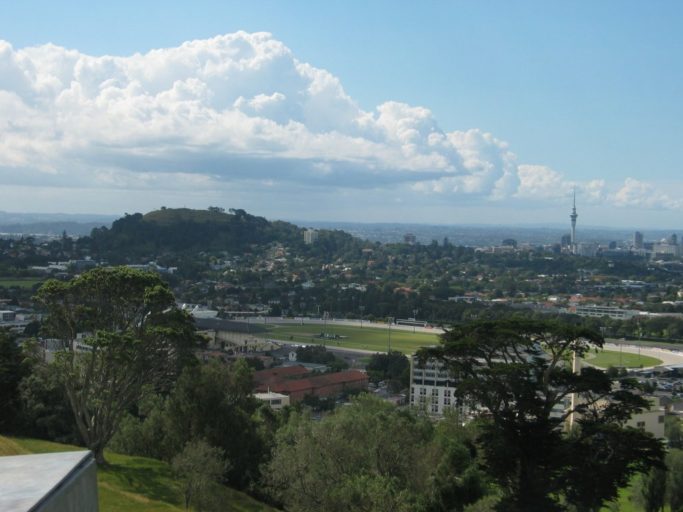
Few assessments of the richness of avian biodiversity across the volcanoes have been made, however.
“To address this data shortfall, we conducted avian biodiversity surveys using stationary point counts within nine of Auckland’s volcanic cone reserves. The nine volcanoes were chosen as study sites based on the interest of the Auckland Council in measuring the biodiversity values of the Tūpuna Maunga reserves. Resources only allowed for these nine of the 14 reserves to be surveyed. The sites were chosen in terms of their potential to support indigenous bird species as they were the largest reserves and also contained the greatest area of forest, treeland and/or scrub habitats.”
Bird surveying stations were set up and vegetation cover was mapped.
“A total of 47 bird-surveying stations were established across the nine volcanoes. More survey stations were used at the larger reserves. Stations were situated at least 100 m but no more than 200 m apart, which equated to an average of one station per 4.9 ha at each site. The percentage cover of different general land-cover types within each reserve was mapped in a GIS desk-top assessment using 2015 ortho-aerial imagery, aerial photographs, Auckland Council ecosystem spatial data and local knowledge.”
Bird biodiversity was surveyed using the 10-minute bird count method.
“Three 10-minute bird counts were conducted at every survey station from 0700 to 1300 hours between 28 January and 3 February 2016. For each count, every new bird detected during the first 5 min was recorded, with a second 5 min period recording only species that had not been detected in the first 5 minutes. This stationary point-count method requires the observer to be familiar with bird calls, because many identifications are audial, especially in forested areas.”
A total of 38 bird species were detected.
“The highest total numbers of native species were detected at Maungarei (Mount Wellington, 12 species) and Takarunga (Mount Victoria, 12 species), followed by Mount Eden and Rakataura (Mount Albert), each with 11 species. Native species with the highest mean relative abundances were silvereyes and southern black-backed gulls. Native species with the highest detection probabilities and that were detected at every site were silvereyes, tūī, sacred kingfishers and grey warblers. Non-native species with the highest mean relative abundance were common mynas, house sparrows, Eurasian blackbirds and eastern rosellas.”
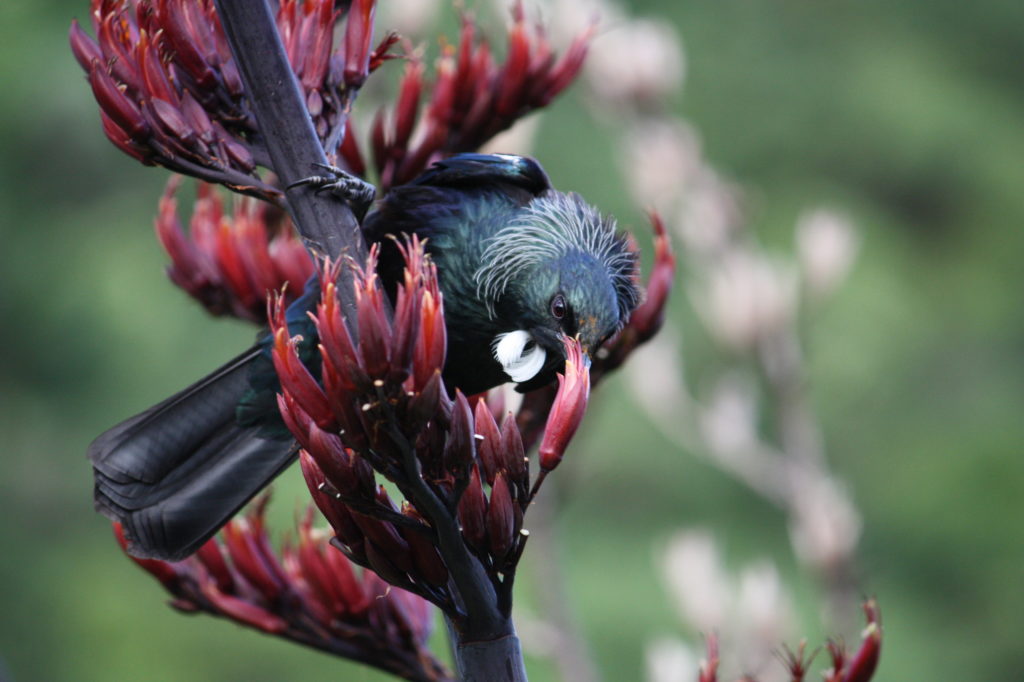
“In total, 18 native and 20 introduced bird species were detected within the nine volcanic cone reserves that were surveyed. Native species included silvereyes, tui, shining cuckoos, grey warblers, as well as other comparatively rarer species such as Caspian terns and white-fronted terns. Introduced species such as common mynas, house sparrows, Eurasian blackbirds and European goldfinches were detected at all nine sampled reserves. Silvereyes and tui were found in high relative abundance at all sites.”
The presence of native bird species is important for maintaining the floral biodiversity at the volcanic reserve sites.
“From an ecological perspective, these avian species and other natives found on Auckland’s volcanoes, including New Zealand pigeon, are critical for maintaining healthy ecosystems. For example, tūī and silvereyes are important pollinators of native trees such as pōhutukawa. Tui are also important pollinators of native species such as flax, kōwhai and puriri. Silvereyes and tūī are important dispersers of the small fruits of native plants such as karamu, red matipou and kohekohe. New Zealand pigeon eat and disperse larger native tree fruits such as that of tawa, puriri, karaka, fivefinger and pigeonwood. These native plants are currently found, with varying degrees of abundance, on Auckland’s volcanoes. The high relative abundance of native birds such as silvereye and tui found in this study suggests that the volcanic reserves continue to retain some remnants of their former ecological functions, e.g. the dispersal, pollination and recruitment of native plants by native birds.”
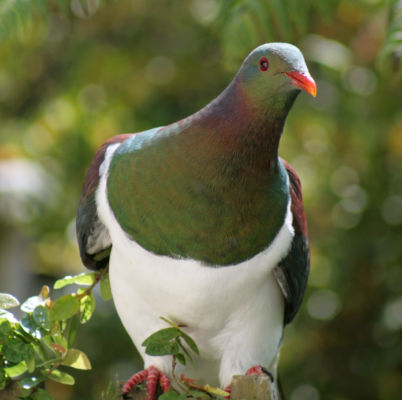
The authors report on current vegetation in the reserves and how floral biodiversity could be improved to encourage more native birdlife to thrive.
“Previous human modification has led to significant changes in the vegetation of Auckland’s volcanoes, which has probably affected the avifauna. Although these areas would have originally been covered in native broadleaf forest, currently they mostly support exotic grassland with some remaining remnants of native forest. Extant vegetation of the volcanoes primarily is determined by slope, fertility and historical land-management practices: flatter, more fertile cone reserves are generally dominated by exotic herb and grass species such as white clover and kikuyu; moderately steep reserves are dominated by exotic grasses, whereas steeper, less-fertile reserves are dominated by native weeping grass Microlaena stipoides.”
“These reserves contain important biodiversity, which would benefit from continued and intensified restoration projects, and thus become managed for their biodiversity as well as their recreational values. Numbers of exotic birds, such as common starlings and European goldfinches, were high across the nine reserves. These species favour open agricultural land, so this finding reflects the large amount of open habitat/pasture on the volcanoes. Future ecological restoration at these sites, such as the regeneration or planting of native bush, may support an increase in the proportion of native to non-native avifauna, as well as other indigenous biodiversity.”
Recommendations for the reserves include:
- Establishing some native forest and more herbaceous native plant species;
- Limiting the usage of fertiliser within the reserves to reduce soil nutrient levels down to more natural levels. “This would in turn reduce the abundance of exotic grasses, such as kikuyu, that can out-compete native plants.”
- Planting of presently uncommon native plants such as maidenhair vine, large-leaved muehlenbeckia/pohuehue, Austral bracken and ring fern/matata to increase groundcover biodiversity. “Groundcover plants help protect soil, retain moisture and keep the roots of taller plants cool in the heat.”
“Collectively, these efforts would probably support native avifaunal populations in the reserves by increasing the amount of native plants and forest available for foraging and nesting. Varying plantings across the reserves so as to include areas of both forest and open-habitat species would likely help support a wider range of native biodiversity such as lizards and invertebrates.”
Predator control for introduced mammal predators is currently undertaken, but the authors suggest mynas may also need to be controlled.
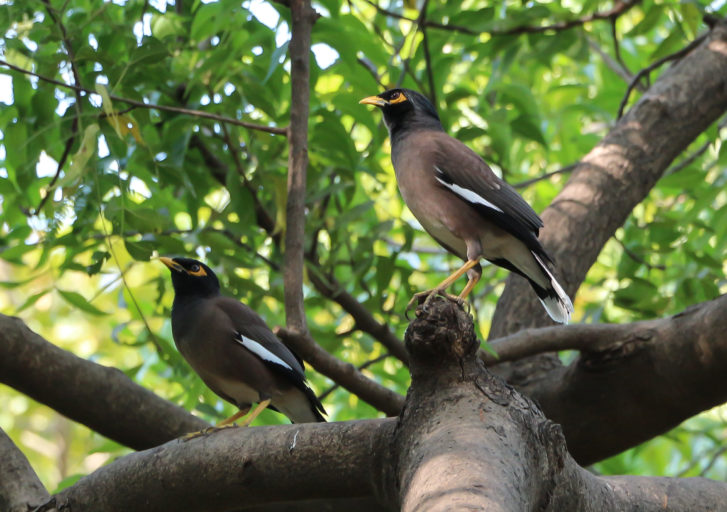
“An area of concern within these volcanic cone reserves is the high relative abundance of common mynas (the second most abundant species we observed overall). Mynas are classified as a pest in the current Auckland Council regional pest management strategy and can harm native and non-native bird populations by predating eggs and chicks. Mynas also compete with native species for territories and nest cavities.”
The authors also emphasise the importance of continuing to carry out regular bird surveys.
“As restoration projects are executed at Auckland’s volcanoes in the future, further avian biodiversity surveys will be useful to assess and monitor their ecological impact. Bird survey stations have now been established within all nine volcanic cone reserves. Data collected at these stations will provide baseline data for monitoring biodiversity changes in these reserves over time. Further volcanic cone reserves may be added to the list of reserves designated for restoration. Hence, we recommend establishing similar surveys to enable us to evaluate and prioritise these novel restoration activities.”
The full research article is published in the New Zealand Journal of Zoology. Only the abstract is freely available online to non-subscribers.
Avian biodiversity across Auckland’s volcanic cone reserves (2018)

